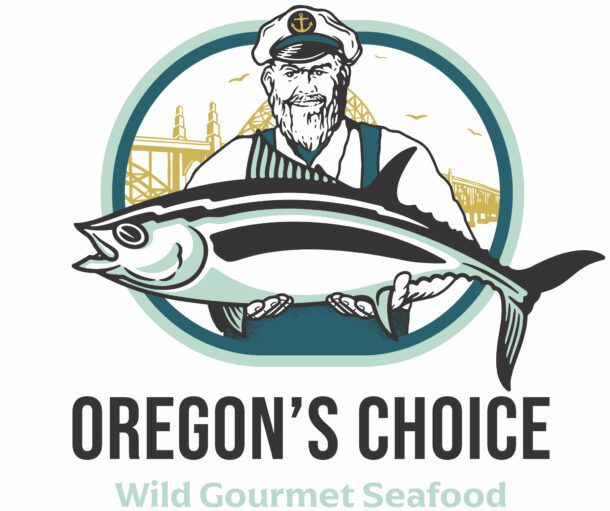当前的问题 & 可持续的渔业
Herb goblrsch评论了农场vs. 野生鲑鱼
Why would anyone want to eat a fish pumped full of antibiotics, vaccines and artificial coloring in its foods and now add PCB?
多氯联苯测试显示养殖鲑鱼vs. 野生鲑鱼
A health group recommends limiting meals of farm-raised salmon after finding slightly higher levels of the chemical.
迈克尔·米尔斯坦,俄勒冈人报
Tests of farm-raised salmon bought in three U.S. cities including Portland show they contain more PCBs than wild fish and other common foods, according to a report released today by a public health advocacy group.
Cut-rate farmed salmon has muscled Northwest 野生鲑鱼 out of many restaurants and stores and now makes up 80 percent of fresh salmon sold around the country.
Opinions differ about whether the risk of cancer-causing PCBs outweighs health benefits of eating seafood. The 10 samples of farmed salmon tested by the Washington, D.C.-based Environmental Working Group would be safe under U.S. Food and Drug Administration standards governing fish sold in supermarkets.
该组织采用了美国政府制定的新限制.S. Environmental Protection Agency and concluded that consumers should not eat farmed salmon from some regions more than once a month. The group argues the EPA rules from 1998 are more thorough than FDA standards dating to the mid-1980s.
“如果你看看真正的风险, millions of people exceed the acceptable level,简·霍利汉说, 集团的研究副总裁.
环保署发言人说, 然而, that the agency's tighter standards were designed for sport and subsistence fishermen who may eat contaminated fish as a steady diet.
大马哈鱼 farming advocates said the Environmental Working Group used the stricter EPA standard to confuse consumers who know the health benefits of salmon and other fish rich in Omega-3 fatty acids.
“如果公众听了这些话, 我们的健康会受到负面影响,”查尔斯·桑泰尔说, a professor of food and nutrition at Purdue University. "Any small additional risk of cancer is far outweighed by the benefits of fatty acids in the fish."
The FDA has begun its own detailed testing of farmed salmon and may update its standards if the results warrant, 发言人金伯利·罗林斯周二说.
Release of the report reflects further escalation of debate over salmon farming, which has captured the world salmon supply by turning out cheap, 一年四季都有鲜鱼. Ecotrust, 波特兰环保组织, said the report could boost demand for 野生鲑鱼 from the Northwest.
The United States last year imported more than 200,000 tons of salmon raised in floating pens off the coasts of British Columbia, 智利和其他地方.
Farmed salmon eat pellets made of ground-up prey fish, such as anchovies.
PCBs have been outlawed in many countries but persist many years in the environment and collect in the fat of salmon's prey fish. Once factories convert those fish into feed, farmed fish consume them in more concentrated form.
The Environmental Working Group tested Canadian-grown salmon from two Fred Meyer stores and a Safeway in Portland. It also tested salmon from other countries bought at stores in San Francisco and Washington, D.C.
研究结果没有经过同行评审. But they mirror peer-reviewed studies from Europe and Canada.
Farmed salmon on average contained PCB concentrations of 27 parts per billion, while 野生鲑鱼 averaged about 5 parts per billion, 环境工作组的报告说. Both fall well within FDA limits of 2,000 parts per billion. But the EPA recommends against eating fish more than twice a week if it contains PCB levels greater than 6 parts per billion.
Comparisons from abroad showed salmon from Scotland held the heaviest load of PCBs, with high enough levels that the EPA limits would suggest eating it no more than once every two months, 报告说.
来自加拿大的鱼, Iceland and Maine held enough PCBs that the EPA standards would suggest eating them only once a month. 大马哈鱼 raised in Chile did not warrant such limits.
The regional variation in PCB levels probably stems from the source of the prey fish used to feed farmed salmon. Farms in Scotland probably use feed made of fish from European waters, which are more polluted than those off Chile.
The long-term risk posed by PCBs in human diets is poorly known, experts say. Most government limits are based on extreme cases in which people were exposed to massive doses due to industrial pollution or accidents.
The benefits of eating fish rich in fatty acids are more clearly proven than the risk of PCB exposure, 罗伯特·劳伦斯说, a professor at Johns Hopkins University's Bloomberg School of Public Health. Omega-3 fatty acids protect against heart disease, reduce hypertension and ease joint pain and arthritis.
Lawrence led a National Academy of Sciences panel on the health implications of PCBs and similar compounds that issued a report in June. The panel decided against changing the current federal recommendation to consume two servings of fish a week.
But it did encourage salmon farmers to pursue feeds with less chemical contamination. 一名行业发言人表示,确实如此.

